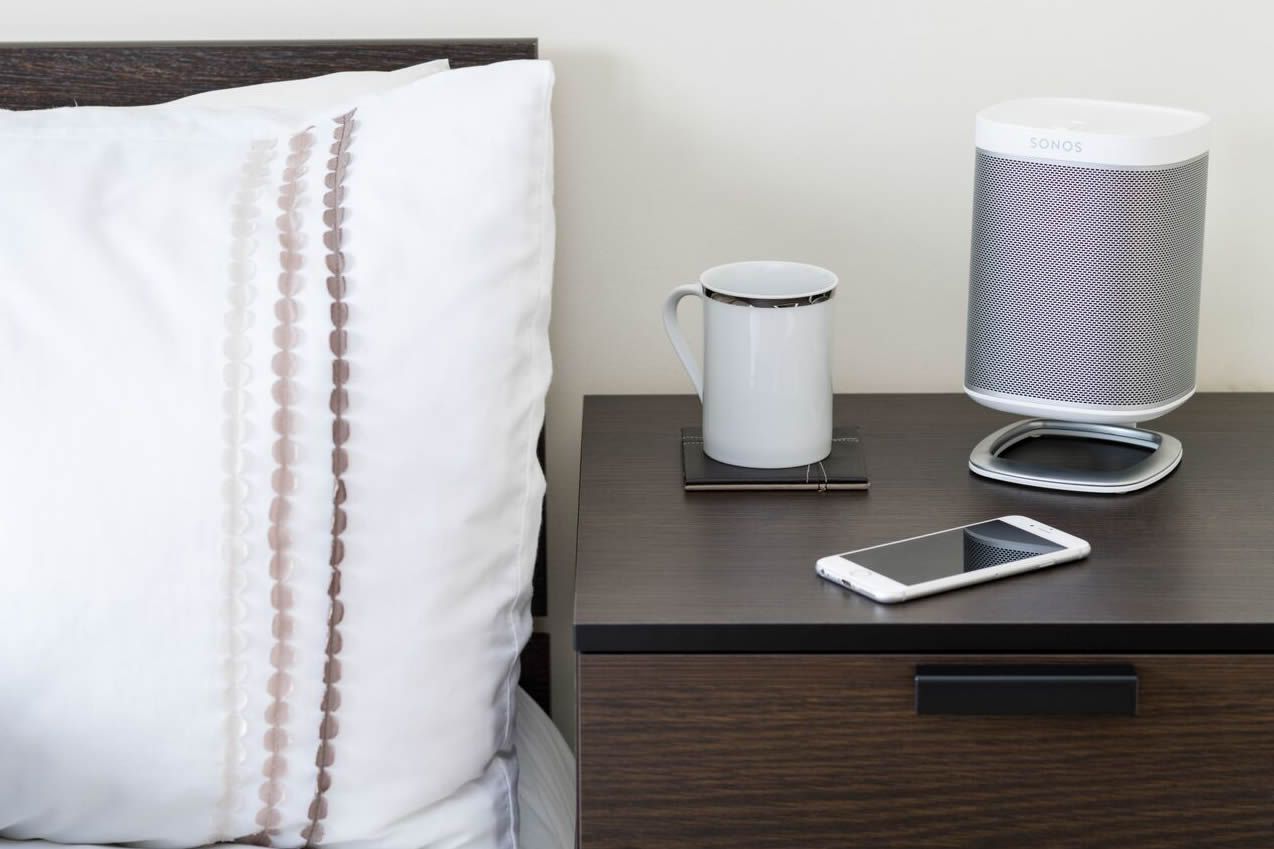Behcet Sevdali is Flexson's brand manager, creating products which enhance Sonos speakers so they look great, sit safely on the wall or desk and fit with your room's layout perfectly. He described the company's central design ethos in simple terms: "It's all about great quality solutions for every Sonos product, giving Sonos users more options for the placement and use of their Sonos speakers."
Every brand needs to have a coherent industrial design, and with a real variety of products, from wall mounts to desk stands to extension cables it can be difficult to make them all recognisable as Flexson products? Sevdali explained, "Our UK design team follows Flexson brand values, which include a focus on providing premium-but-functional solutions that are styled to complement every Sonos product."
Ah, yes, of course it's crucial that the Flexson products look like they go with the Sonos speakers, too, so how does Sevdali settle on colours they might want to use? "It's simple really, we work hard to colour-match to the Sonos product so our accessory seamlessly integrates with it. On occasion we add accent materials and finishes such as the Oak and Walnut real wood used on our Premium Floor Stands, which give the products a luxurious feel. This has the helpful side-effect of matching other real-wood furniture finishes customers are likely to have at home. So much for colours, what about materials? Sevdali is meticulous in making sure the products look right in material terms, too. "We only use high-quality materials and finishes that complement the Sonos speakers, and ensure they're properly supported. There are cheaper options, but we work to higher standards."
The design process is clearly complicated and takes time, I imagine, to progress from beginning to end.
"Yes," Sevdali explains, "It's not a short process - we want it to be right, not fast - but really, everything starts with the Sonos product. The Flexson product team - who are all keen Sonos users, by the way - brainstorm possible accessory ideas, including input from our customers. Nothing is disregarded at this stage - all ideas welcome!
"We then research and evaluate the ideas, considering user requirements in detail, before making our final selection to go into production. A product brief is then created, with design concepts, manufacturing processes, timescales and costs. We go through a thorough prototyping process, optimising and refining designs until they're ready for sign-off. Once they're in production, we concentrate on creating clear packaging and imagery, so customers can easily see and understand what they're buying."
Well, that really doesn't sound like a short process! How long does it take from first idea to the product on sale? Sevdali says, "Depending on the type and complexity of product, between four to eight months. The more complex products often require tooling for moulded components which increases our time to market project schedule.
Sevdali has already mentioned the importance of matching the Sonos design. It's a fine line between between being invisible and too noticeable, perhaps.
"With our wall mounts we aim be discreet but functional with the minimum of fuss to install and set up. Our floor stands, on the other hand, are on display so we take the lead from the Sonos product to enable us to complement their design.
I know how I react when I first see a new Sonos product, like the Beam, for instance, but Sevdali has a different take: "We have to be in the mind-set of the end user, how they (that includes us as Sonos users) will use the speaker and how they will interact with it. The Beam is a great example, using simple forms cleverly executed, upgrading TV sound, playing music and with Alexa voice control. We considered all the ways it could be used, more than just with a TV. For example, our Adjustable Wall Mount is ideal for mounting the Beam under a Kitchen cabinet."
Sevdali mentions the Beam, which is clearly a different design language from Sonos designs of years ago. Does this mean Flexson has to evolve its design approach, too?
"Yes, absolutely,"Sevdali says, "Some of our designs are functional products hidden by the Sonos speaker, which you could say need to workbehind the scenes. When our product will also be on display we want it to integrate with Sonos, being considerate to the Sonos design."
Flexson products are very diverse, so I wonder if some are more challenging, or more fun, when it comes to designing them. Sevdali smiles, "Actually, the most challenging projects tend to also be the most fun, requiring creative and innovative solutions. Designs involving the use of different manufacturing processes are always fun and give us more flexibility and scope when designing. For example, our Wall mounts for Play:1 and Sonos One are an extremely efficient little design, super-compact with all the functionality needed, and they look great, too. This could only be achieved by investing in high-quality bespoke moulded components to give our customers what they need, and of course we love seeing people using our products. Seeing them both sold and used by Sonos itself is particularly gratifying."
Sevdali recognises there are challenges when it comes to prioritising the look or the practical requirements for a Flexson accessory. "We always aspire to encompass both, to optimise the aesthetic but of course as an accessory manufacturer we must always meet the functional requirements."
There's more to Flexson than speaker stands, such as the connectivity items like cables which have a very different design to them. Because they'll largely be hidden does that modify how you think of them?
This reflects back to the original specification we set ourselves, our products must be functional, complement the Sonos product and be efficient in doing so. The connectivity products do not sit alongside Sonos products and are intended to be hidden away, hence we've kept the forms simple and efficient to manufacture allowing us to pass on value engineered products to our customers.

